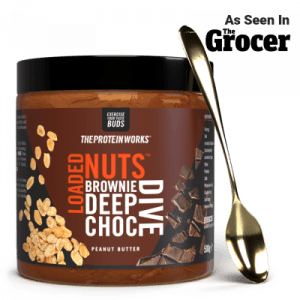Music is a great motivator.
In fact, for many people it’s often a non-negotiable component of their workout, so much so that it’s not uncommon to walk into a gym and see everyone sporting headphones, but what is it about music that makes us want to tune in, turn it up and workout?
It could be the fact that music has the power to make you happy when you’re sad, energetic when you’re tired and the ability to turn an okay workout into a great one.
It’s no wonder one the world’s leading experts on the psychology of exercise music calls it “a type of legal performance-enhancing drug”
In this article, we’ll break down all the different ways music can improve your workout.
#1: It Provides an Escape
A study [1] from 2013 found that music provided an outlet for people to ignore their current circumstances and escape the real world for a little while.
In conjunction with exercise, this can a beneficial means of stress relief for anyone going through a tough time. Next time you’re going to do a workout, don’t forget to grab your headphones so you can plug in and tune out.
#2: It Makes You Run Faster
Researchers [2] studied 26 recreational runners to see whether listening to music with a beat per minute count of between 130 and 200 would make them speed up or slow down.
They found that runners would either increase or decrease the number of their footfalls to keep in time with the music, allowing them to conclude that music with a beat per minute count of 160 to 180 may be ideal to boost your running performance.
This means you’re going to want to give a thought to your playlist next time you’re out pounding the pavement for a smooth, speedier run.
#3: It Makes A Hard Workout Easier
We all know instinctively that a good playlist can make even the most gruelling of workouts easier, but there’s research to back up this feeling.
One study [3] found that listening to music made working out more enjoyable, with another study [4] finding that listening to a playlist you enjoy can also help decrease how hard you think the workout is during low and moderate-intensity exercise.
Additionally, the researchers also noted that the longer participants of the study exercised for the more powerful the effects of the music were. It’s no wonder music has felt like a superpower every time you’ve been smashing your way through a HIIT workout or circuit class.
#4: It Helps You Pushes Your Limits
Following on from the above music can also help you work harder for longer allowing you to push your limits. A study [5] found that this works by allowing you to ignore some of the fatigue from your training and allow you to work harder because of it.
However, another study [6] shows that this effect only works up to a point and that when doing high-intensity exercises in your anaerobic zone this effect is negated.
This means if you’re going to be exercising in your aerobic zone then you’ll want a playlist packed of your favourite jams to get the most from your training.
#5: It Can Calm You Down
In the same way, high tempo music can push you to work harder for longer, slower-paced music can do the opposite and help to reduce your heart rate after working out or reduce pre-game nerves [7].
This makes it the perfect accompaniment to your post-workout stretch or morning yoga session to help you bring your heart rate back to normal levels and keep you nice and relaxed.
#6: It Improves Coordination
Have you ever noticed that a thumping baseline could make an exercise class easier to follow? Turns out this is because listening to music encourages you to move more rhythmically [8].
Research shows that this is because listening to music you enjoy increases electrical activity in the brain linked to coordination [9], making complex movements or coping your instructor feel easier and more natural.
Summing Up
I’m sure now you need no convincing of just how powerful music can be when working out. It can not only allow you to train for longer, but it can also help you train harder, push your limits and then recover more quickly afterwards.
All that’s left to do now is for you to put together your playlist ready for your next workout.






No Comments yet!